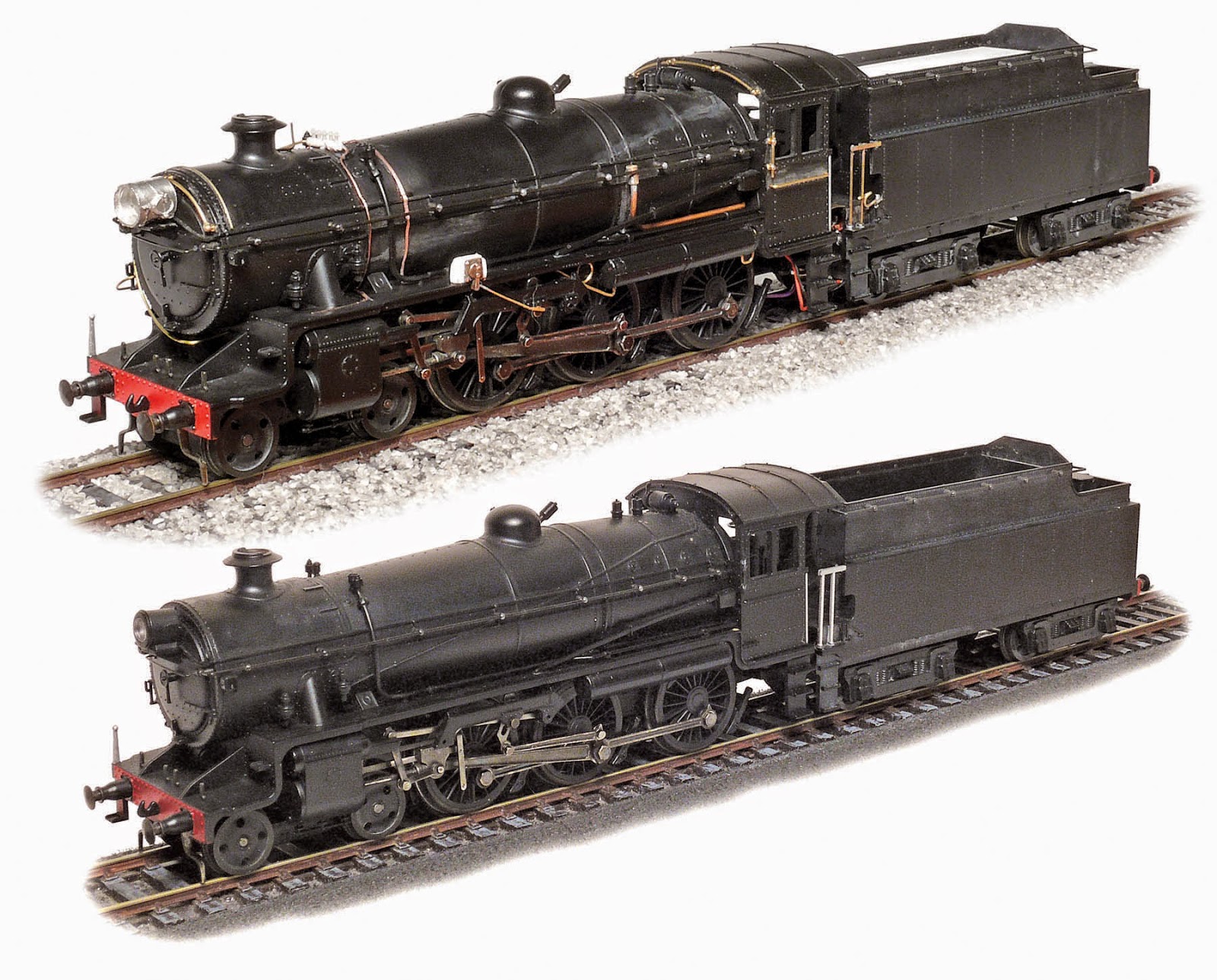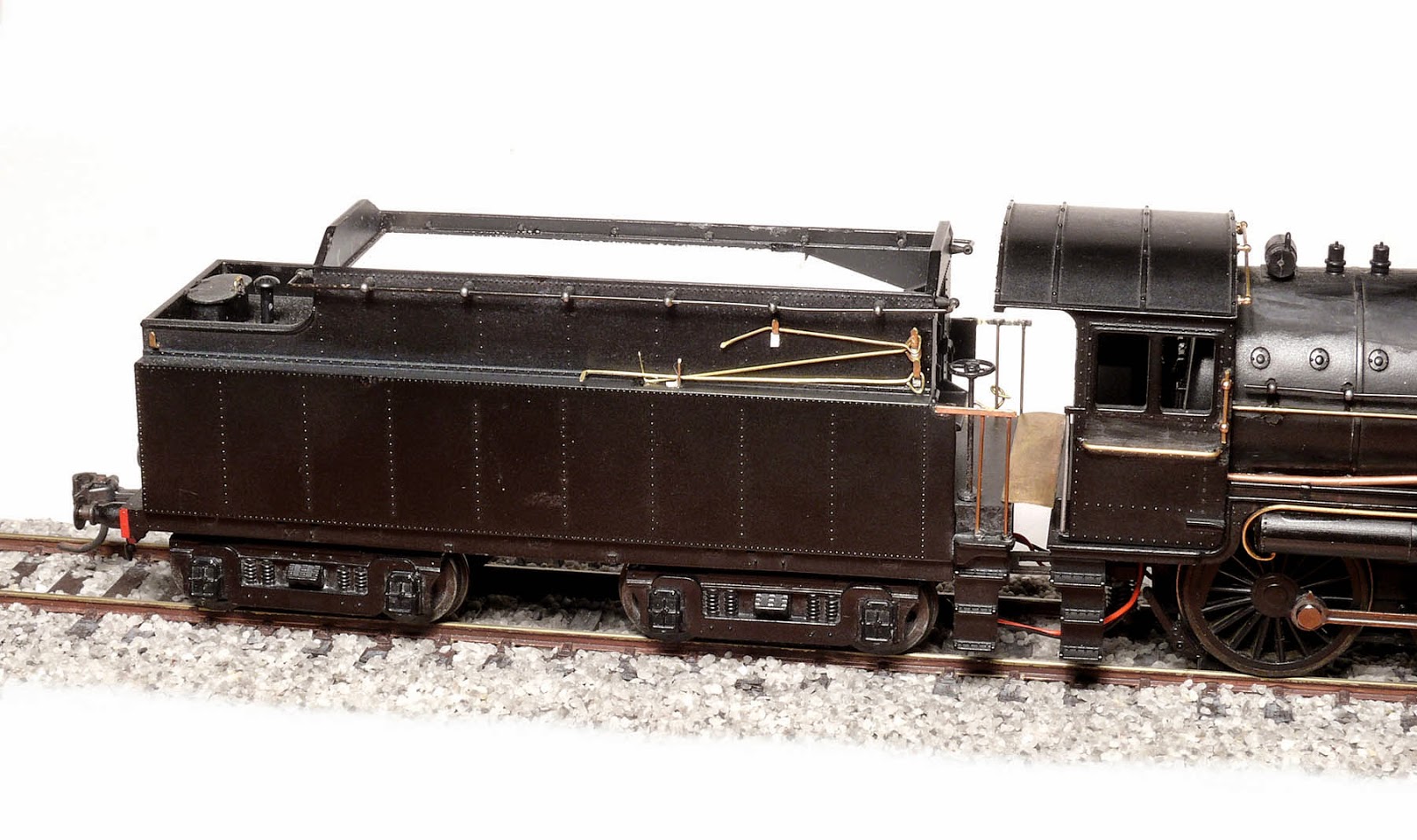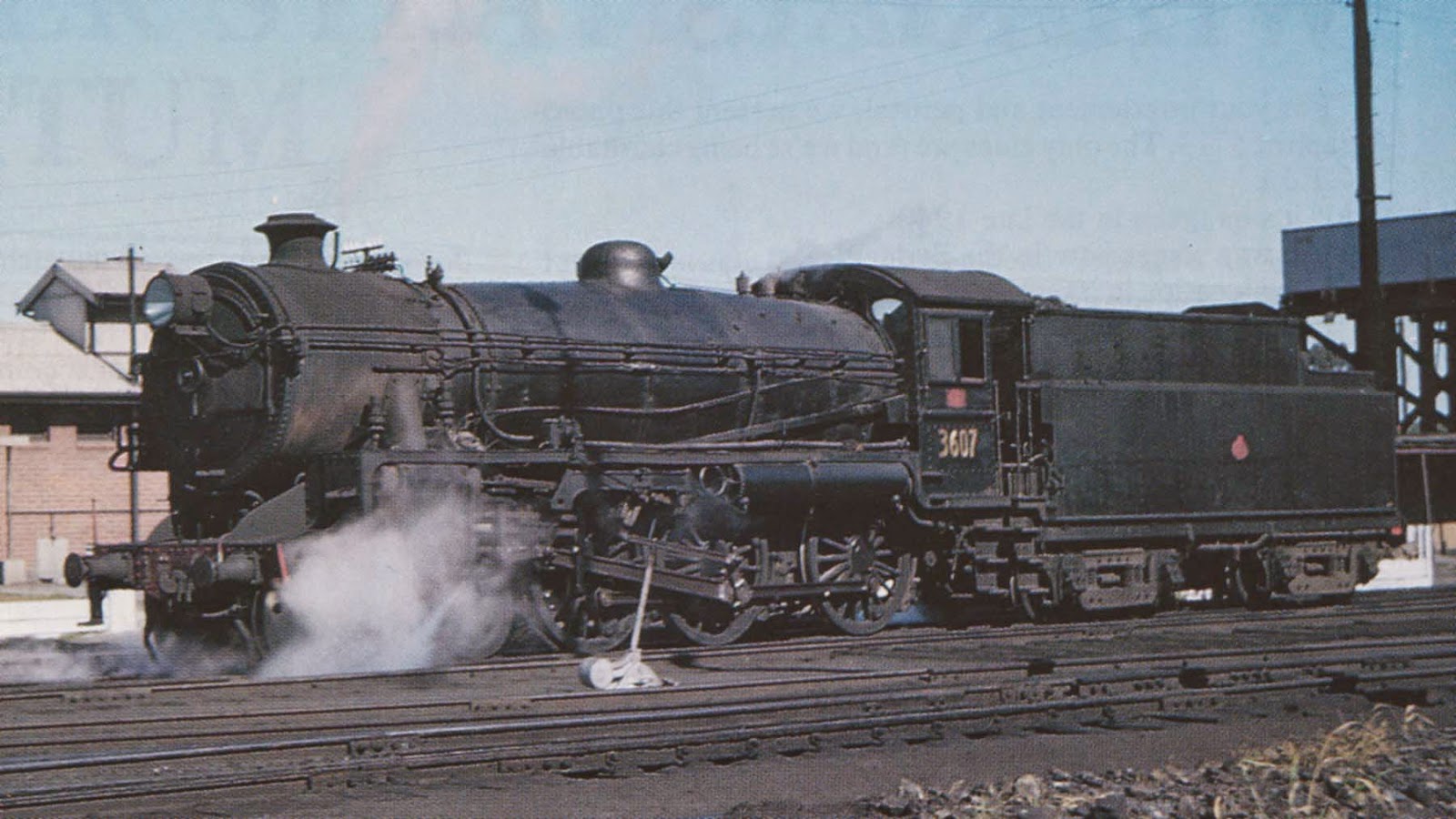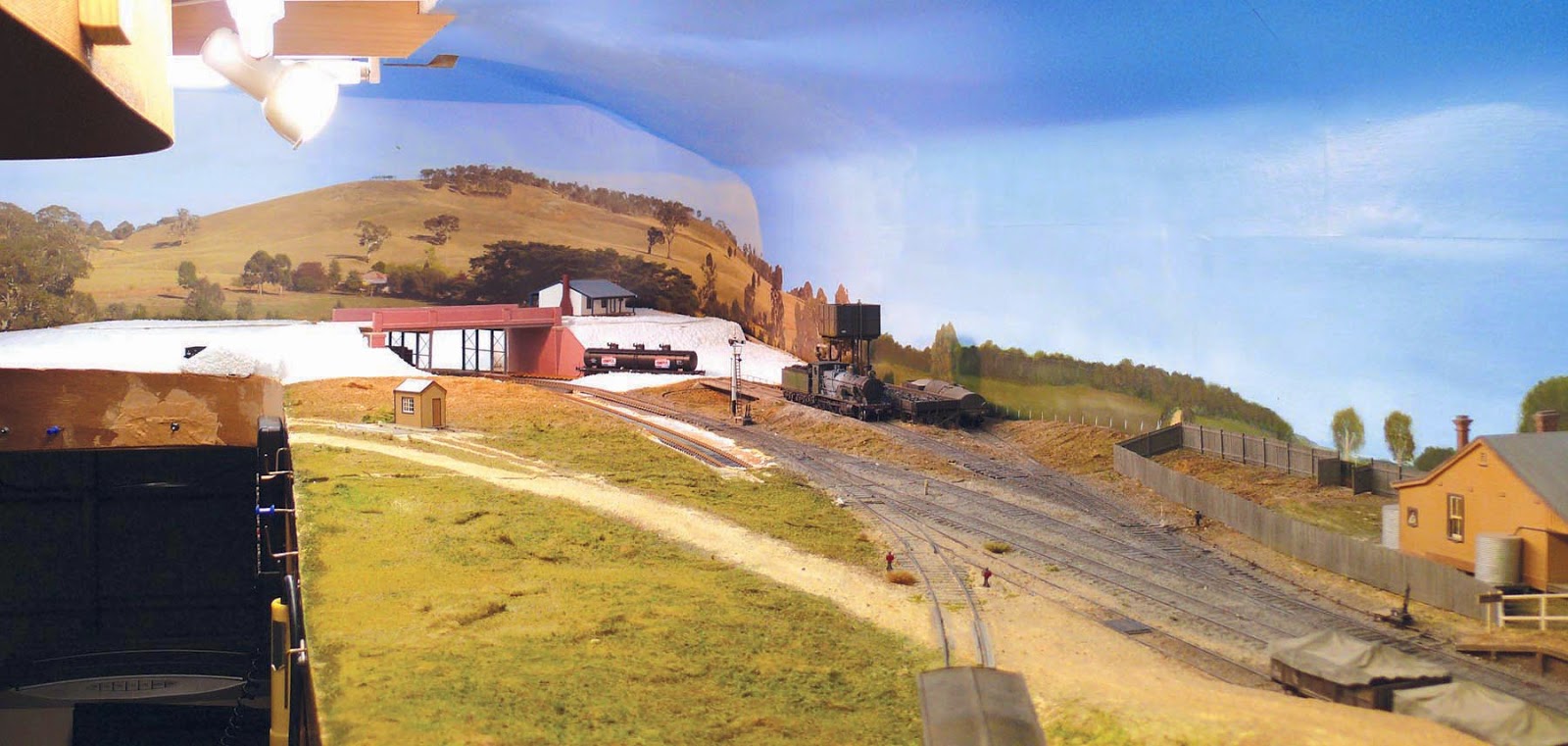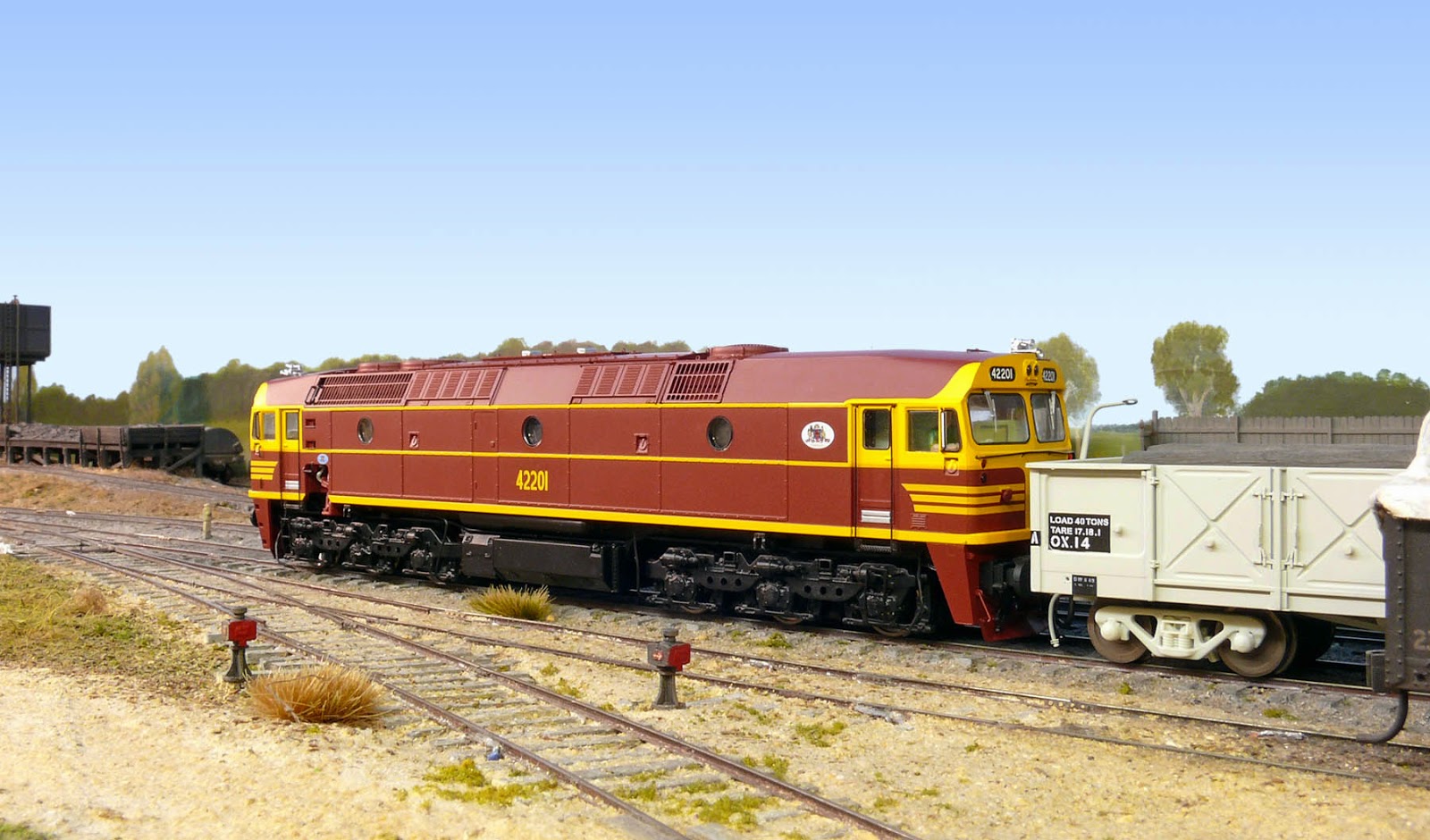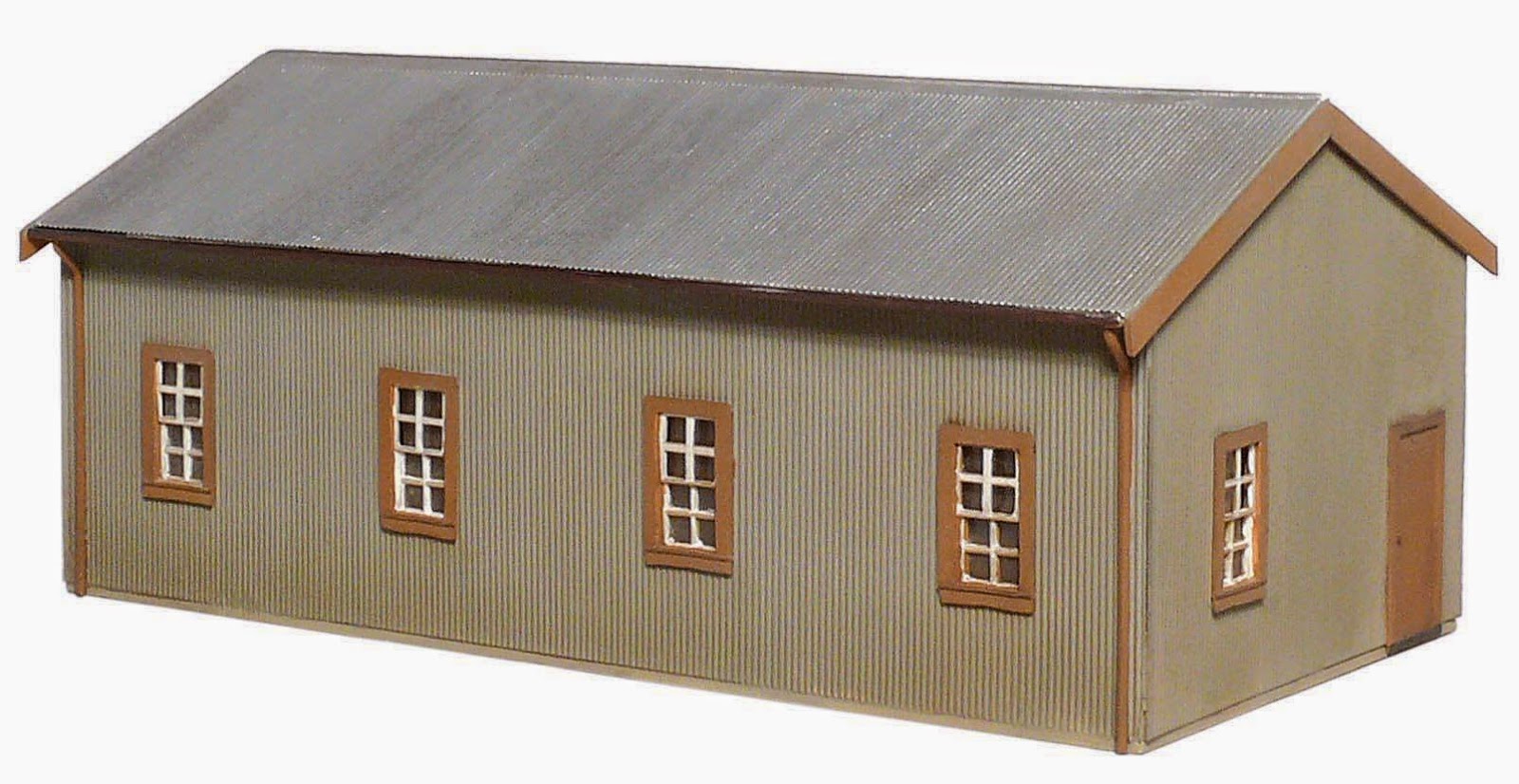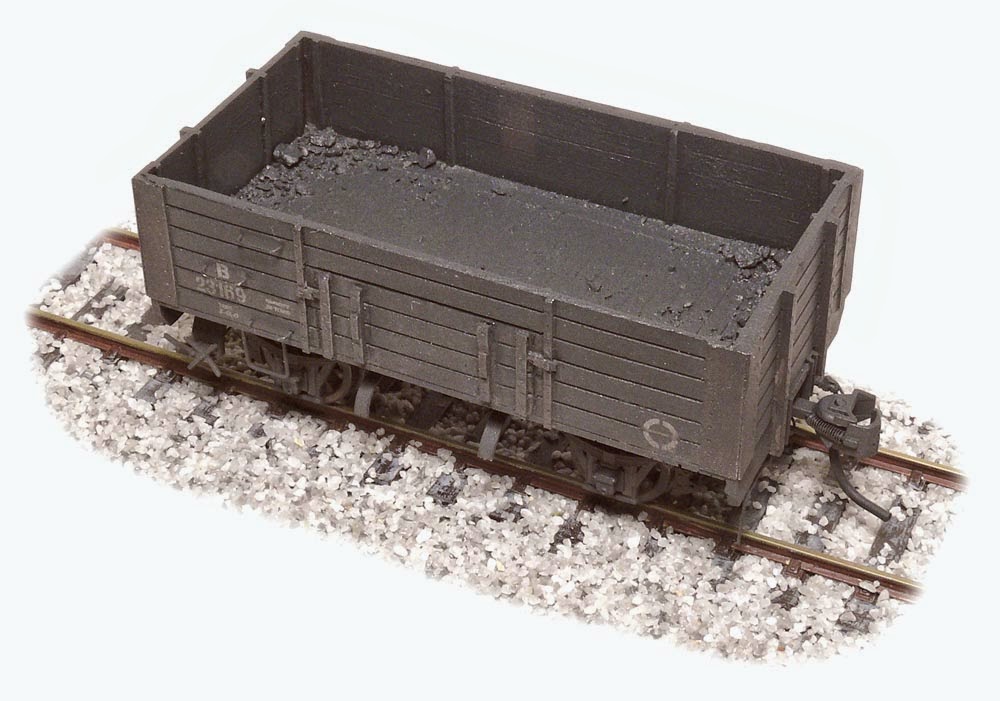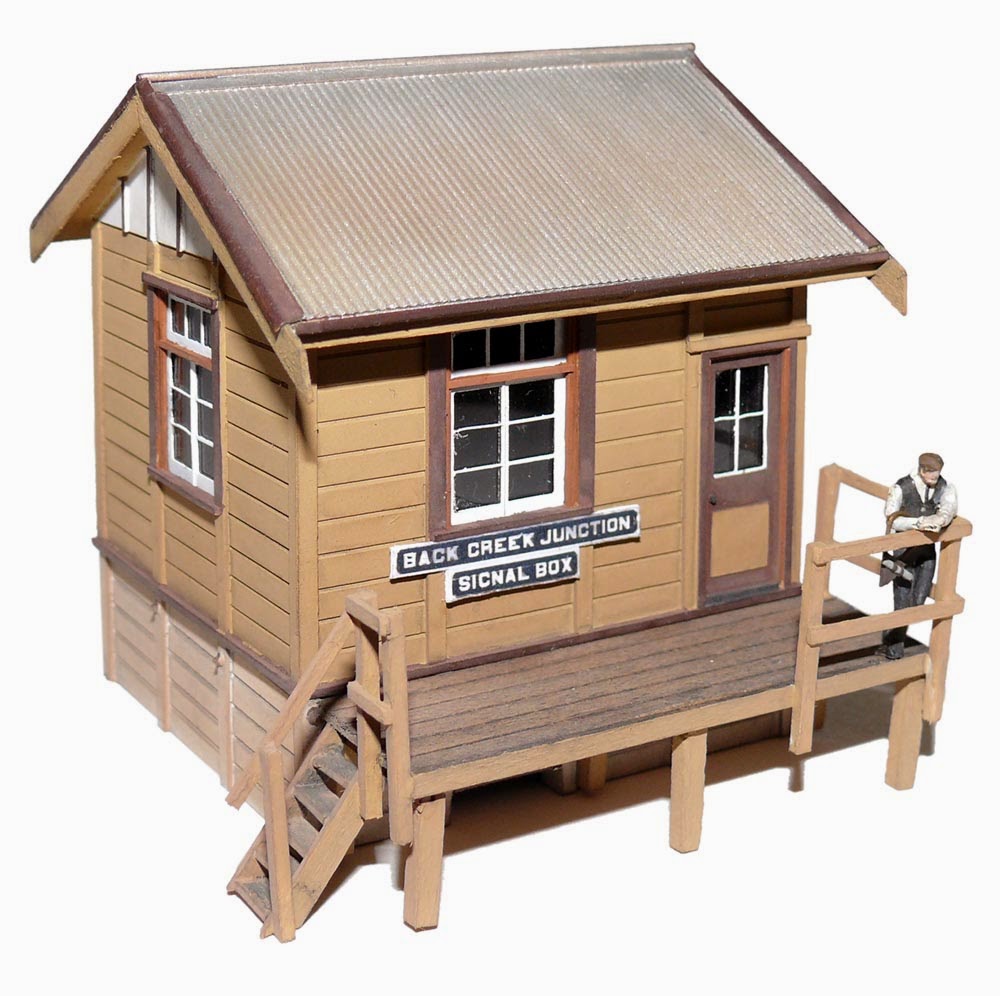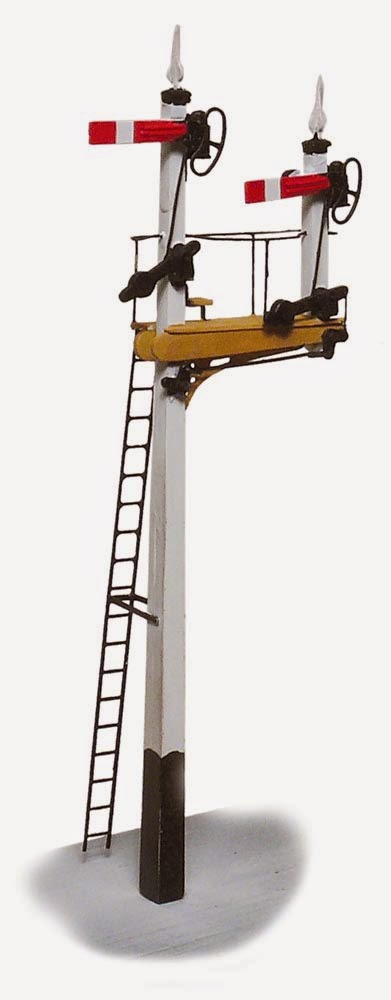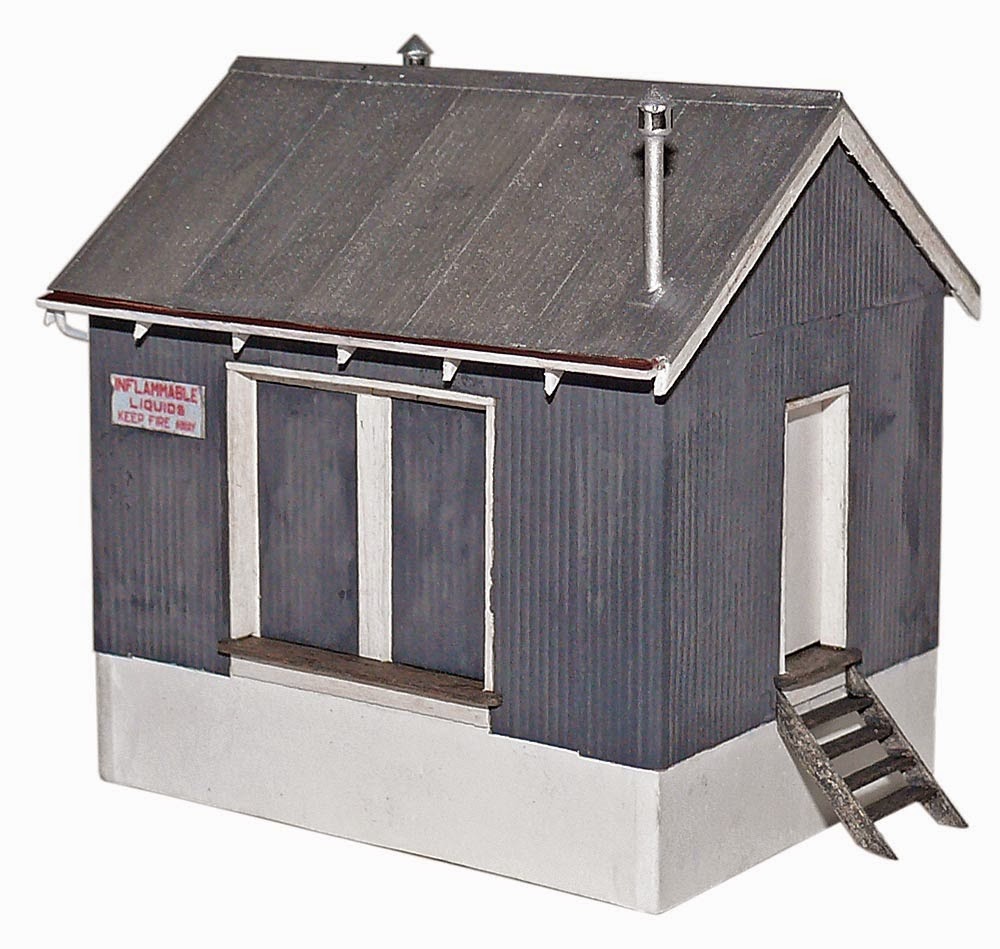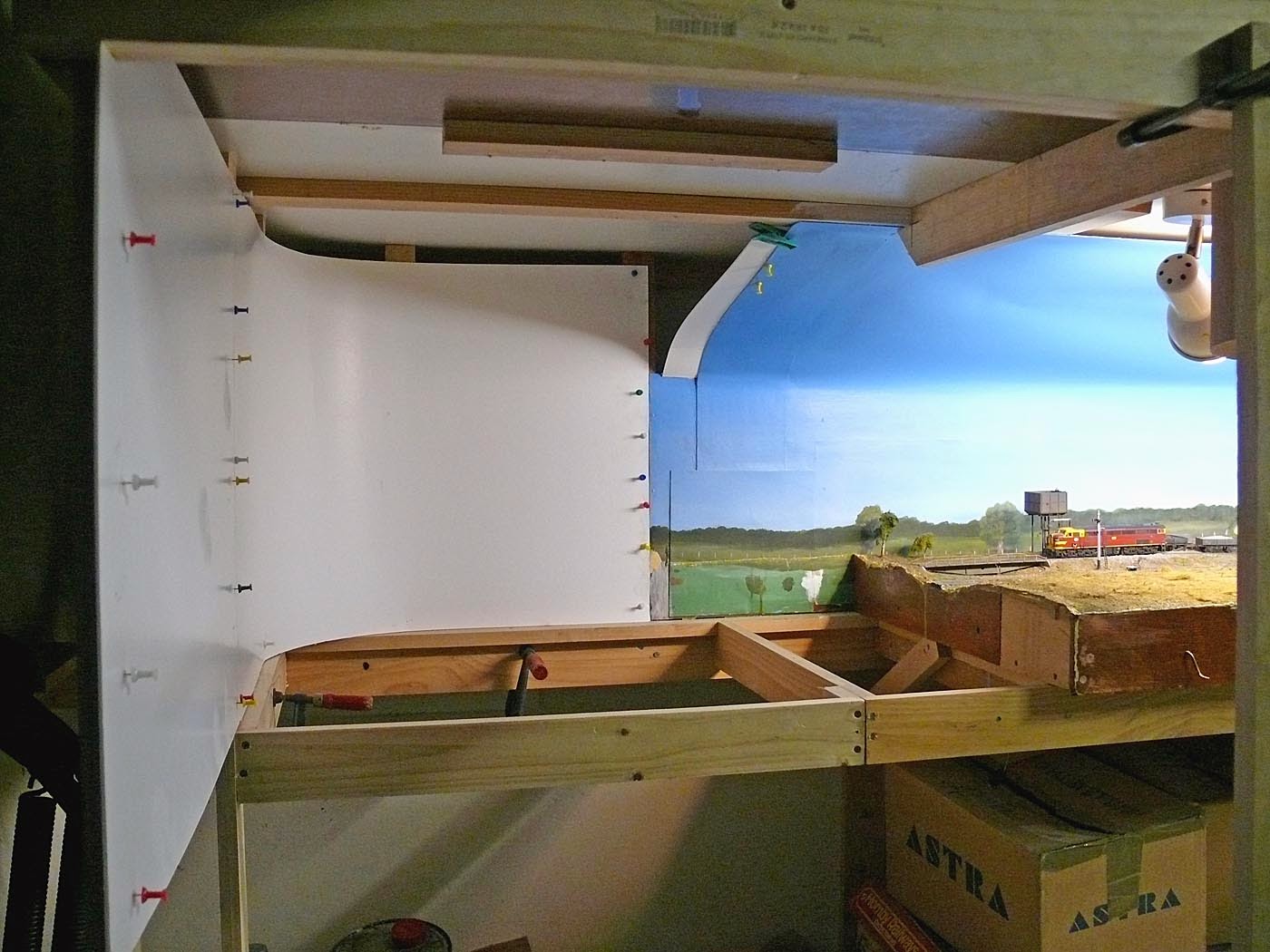After an entire year of very little activity at Lambing Flat, a resumption of work on the extension has motivated me to bring things up to date.
When my last post was made (in November 2012!) I had just started work on a major extension at the 'down' end of the yard, where the old Murringo fiddleyard used to be (see drawing in previous post). Even with the addition of the second fiddleyard (shown as 'Cowra' on the drawing in the previous post, but since swapped over to be regarded as the 'Demondrille' fiddleyard, because it made more sense geographically), I was still very short of strorage space, plus I was finding that most of the activity was taking place in the fiddleyard as I made up new trains and that most of the rolling stock was usually in the fiddleyards and could not be seen!
I decided that it was time to build a new section and extend the layout a little further. As my favourite activity is shunting trains, I decided that, rather than make a new fiddleyard and have everything still happening 'off stage' and with most of the models hidden away, I would make this new section a marshalling yard, allowing me to shunt 'on stage' and allow more displaying of my rolling stock.
The rationale is that during WW2, traffic grew beyond the capacity of Lambing Flat itself to reverse trains running between Demondrille and Cowra on the cross-country line (as happened in real life at Binnaway, hence the addition of extra marshalling sidings at that location in the 1940s), so new marshalling sidings were laid out just out of town. Also, rather than that end of the line proceeding to the terminus at Murringo, as was the previous scenario, the assumed 'real life' orientation of the station has been turned around and the line now proceeds to Temora (replacing the Cootamundra - Temora line, which wasn't built in my scenario). That explains why the fiddleyard names have swapped, as well.
Now, instead of reversing in Lambing Flat yard, trains on the cross-country line proceed through the station to the New Yard, where they terminate. The yard shunter releases the train locomotive, which then runs light to LF to turn and await its next duty. The yard shunter then shunts the train out, removing any traffic for destinations towards Temora and adding any outbound traffic up to the length limit, then places the loading on a convenient brakevan to make up a new train. When this is done, the train engine returns tender first from LF and attaches to the new train, does the brakes and departs when a 'path' opens up in the heavy traffic on the line (there is usually another train waiting in LF's yard for entrance to the New Yard). Any traffic for the Temora direction is placed in a convenient siding and after a while is assumed to be arriving traffic that is then carded for LF, Cowra or Demondrille and placed on an appropriate train.
Below is a photo log of the construction that occurred in November - December 2012.
The extension at what is now the western end of the Lambing Flat's yard begins on 6 November 2012. The old 'Murringo' fiddle yard is no more and the support structure for the new corner module is almost complete (the 2" x 1" at far left is temporary while everything dries). The storage shelf that covers the entire layout has been extended, as has the Masonite valance that keeps everything looking tidy! The heavy card backscene has also been extended.
Another view, taken on 6 November, showing where the corner module will go. Where I am standing will be the 'New Yard'. The backscene boards are temporarily pinned while the glue dries. I still have to 'fair' the curved section of the old backscene into the new one before I can paint it. The new backscenes is vertical, as I do not regard the curved over backscenes behind the station to have been a complete success visually and they are a total nuisance when photographing.

Progress by 7 November. The backscene has been roughed in and the basic module completed. I still have to fill and smooth off the backscene before painting it and the module has to have the profile board cut to size and the track supports cut and raised to accomodate the various levels once I have finalised the trackplan. I originally intended to remove the current fabricated steel 60ft turntable and replace it with a 60ft Sellers cast iron table, situated in the left foreground, with a Uneek roundhouse behind and the current turntable access road extended to the turntable with extra roads to accommodate what was to have been a much larger loco depot. However, a change in thinking has postponed that modification till after I have finished the rest of the New Yard. The module is a straightforward ply box, just like all the other modules that make up LF.

By the 10 November the bottom half of the module for the New Yard had been constructed, once more a simple ply box. This one has its own folding legs, with castors attached for easy wheeling around the workspace.
By the 12 November the cover had been mostly completed, a light pine frame with thin ply roof and MDF valances, with just one section of the front valance and the 'slide in' backscene to go in, plus lighting, before tracklaying can begin in earnest. A couple of buildings have already appeared to help with planning.
Another shot from 12 November, with track planning underway, using lengths of flexible track and printed out Peco code 75 turnout diagrams. The track is all Peco code 75, handlaying track is for much younger and more patient people now, as far as I am concerned! The track plan is all based on good NSWGR practice.

Progress by 18 November. The valances have been completed, filled and sanded ready for painting. The backscenes have been installed and preparation for painting is advanced. The lighting has also been installed. The corner module has been lit by adding another fluoro, like the rest of LF (top photo), but I decided to experiment with these new-fangled LED strips for the 'New Yard' module (bottom picture). I'm quite impressed with the results, extremely quick and easy to install and a very good level of lighting. There is only one row in this photo (I later added a second) as the light level seemed a little lower than I like. I now had all the track I needed and once I took delivery of a couple of Cobalt point motors, track laying commenced.
By 3 December 2012 the connecting track between the existing main line at LF and the New Yard entrance turnouts had been laid and 'tested'. The very first loco to run under its own power on the extension, 5303, stands at the entrance to the New Yard.
By 9 December 2012, the trackplan had been finalised and the track laid out, ready to secure once I had installed some more point motors. (The main line is permanently fixed with point motors installed, but the rest of the yard isn't yet.) In the scenario, the New Yard has been laid out adjacent to Wirrimah, the first intermediate goods siding out of LF. The original siding is to the left, while the New Yard is to the right.

By 13 December 2012, all the track had been laid and all but two point motors installed (I ran out and took a while to get some more, then, with one thing and another, they didn't get installed till last week!) I used Cobalt electric 'stall' motors on the main line where crossovers and turnout/catchpoints had to move in unison, with Blue Point manual turnout 'motors' in the yard where turnouts move individually. The next step was to wire it all up and get it working. The track on the right is the main line, with Wirrimah's goods siding in the distance. The crossover allows entry into the yard and the 'nest' of sidings at the top left. The track parallel to the main line on the left bottom is the shunting neck, which reaches back towards Lambing Flat, but isn't connected to it. The loop siding on the left is the Repair Road.

By 21 December, the wiring had advanced sufficiently so that the new section (except for the repair siding, which was spiked over 'out of use' until some more point motors could be obtained) was operational. Here we see the Official Train, comprising varnished TAM and Tuscan and russet AM sleeping cars, headed by dirty green 3240 and trailed by a Tuscan and russet MHO, as befitting the late WW2 period of construction, brings some 'brass' from the 'big smoke' to inspect the new works. As you can see, 'Construction Branch' is still well and truly in possession!
Shortly after the shot above, the very first goods train to use the new facilities enters the New Yard. Hauled by 5262, this mixed goods had arrived from Cowra. Yard shunter, 5303 (which really should be facing towards the yard) waits to deal with the train.
Yard pilot, 5303, has shunted the incoming train to one of the storage sidings and now stands in the departure road with the brakevan off the train. In the background, 3240 has turned and is getting read to haul the Official Train back towards Sydney. No doubt, there will be other inspections made on the way and the Traffic Inspector's note book will be kept very busy!
Once everything was operational, that was pretty
much it for a year! I ran trains, thoroughly testing
the trackwork and making adjustments to the operating patterns, but
not much else. However, the urge to do some more hit a week or so ago, so there
may be some more updates soon!

